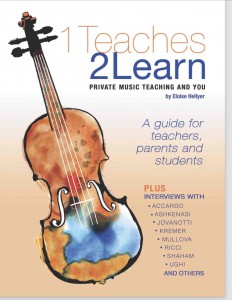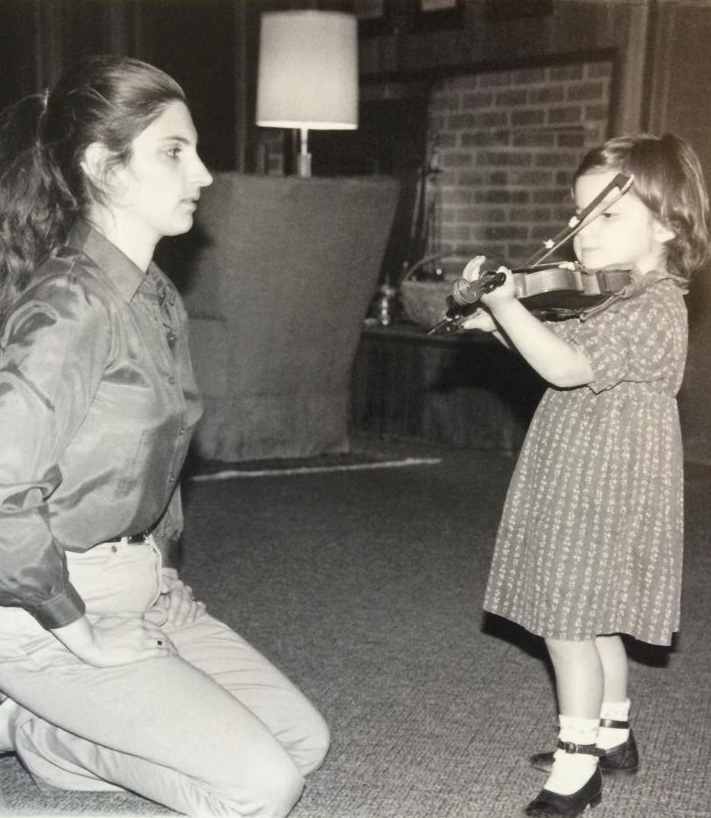Anger: A User’s Guide, Part 2
Anger has a place in the practice room, too. It must be seen as an emotion that is useful to raise up energy to solve a problem of some kind. The anger you feel when you just can’t get something right, helps you to keep trying – if you use it well. I have a 10 year old student, a sweet, lovely little girl, who consistently denies her emotions. It has taken me years to persuade her to admit that she gets angry – sometimes. Unfortunately, you can hear it when she plays – no oomph. But we are making progress! The other day her mother told me that this little girl was practicing something she just couldn’t get right and seeing her frustration, she told her not to get angry. The child’s response was, “But my teacher said I should get angry so I can solve the problem better!” In fact, she did allow herself to get angry and resolved the difficulty she was facing. She will often make a good sound now, too, but it isn’t consistent – yet. As I have observed, a saintly attitude is not always conducive to good violin playing. (Although lots of saints who were known to lose their tempers, surely for saintly reasons.)
In my experience, I have encountered three different reactions students have when they make a mistake or encounter difficulties when they practice:
- The Victim: “Oh, I’m not capable. I’m no good. I will never be any good.” It’s a downward spiral from there and not much gets done.
- The Optimist: “I did that wrong, but what do you expect – I’m not very good. Maybe I won’t make that mistake next time and maybe my teacher won’t notice if I do.” And then tries a few more times half-heartedly. Better, but still very little progress.
- The Tiger: “I’m so mad I think I’ll throw something (not the violin, we hope) – I am so stupid!” Here something may be accomplished but the energy is like a loose cannon.
Of these three types, which is the easiest to teach?
Out there somewhere may be a perfectly balanced student who when confronted with a problem will analyze it carefully and then try and try again until she gets it right. I have never had a student like this – at least not a beginner. I have always had to teach my students how to approach difficulties – even the so-called “big talents.” I get lots of Tigers who, of course, are the easiest to teach. You only have to help them learn how to direct their anger energy away from themselves and toward what they are doing, while you teach them good practice habits. The other two types are more difficult. I teach my students that it is not only okay but is actually a good thing to feel some righteous indignation when they encounter a problem. But this requires them to have faith in themselves, which seems in short supply – especially for the Victim and the Optimist even if they are using their defeatist attitudes as an excuse not to practice. When I am at my wit’s end with these students, I will tell them that if they don’t have faith in themselves, at least have faith that I know what I am doing and know what they are capable of.
If you are succeeding, it starts to go something like this:
- The Victim: “Oh, I still don’t think I’m up to this, but my teacher thinks so and so far she has never been wrong about my abilities. I’ll give it a try.”
- The Optimist: “Well, I made that error, but I have noticed my teacher hears all my mistakes (imagine that!) so I had better do something about it before she goes into action (the old witch). Now what did she tell me to do?”
- The Tiger: “How could I do something so stupid! My teacher says I am much too smart to make such a mistake and that I can fix this if I just apply what she tells me. Now let’s see.”
This is already better. The idea is eventually to bring them all to the Tiger level with perfectly directed energy and practicing habits. Well, that’s what I aim for.
Playing and practicing a musical instrument can teach children something marvelous: that they can take their most negative emotions and transform them into something beautiful and edifying for others. That they can use their emotions instead of being used by them. That the energy from their emotions can be used to help themselves, too, instead of being a destructive force. That even their “bad” emotions can help them to become better musicians.
It says somewhere in the Bible “In your anger, do not sin.” I would add, “ Go and play the violin.”
Share this:
Buy it on www.sharmusic.com - eBook format, avaliable worldwide, paperback in North America
COPYRIGHT
ABOUT
A music teacher’s thoughts and observations on the teaching and the study of a musical instrument, hoping to be of help to parents, students and teachers.
PHOTO
AWARDED TOP 25 VIOLIN BLOG
CATEGORIES
TAGS
ARCHIVES
-
Agosto 2022
Agosto 2023
Agosto 2024
April 2015
April 2016
April 2017
April 2019
April 2020
Aprile 2022
Aprile 2023
Aprile 2024
August 2014
August 2015
August 2016
August 2017
August 2018
August 2019
August 2021
December 2014
December 2015
December 2016
December 2017
December 2018
December 2019
December 2020
Dicembre 2022
Dicembre 2023
Dicembre 2024
Febbraio 2022
Febbraio 2023
Febbraio 2024
February 2015
February 2016
February 2018
February 2019
February 2020
February 2021
Gennaio 2022
Gennaio 2023
Gennaio 2024
Giugno 2022
Giugno 2022
Giugno 2023
Giugno 2024
January 2015
January 2016
January 2017
January 2018
January 2019
January 2020
July 2015
July 2017
July 2019
June 2016
June 2017
June 2018
June 2019
June 2020
June 2021
Luglio 2022
Luglio 2023
Luglio 2024
Maggio 2022
Maggio 2023
Maggio 2024
March 2015
March 2016
March 2017
March 2018
March 2019
March 2020
March 2021
Marzo 2022
Marzo 2023
Marzo 2024
May 2015
May 2016
May 2018
May 2019
May 2020
November 2014
November 2015
November 2016
November 2017
November 2018
November 2019
November 2021
Novembre 2022
Novembre 2023
Novembre 2024
October 2014
October 2015
October 2017
October 2018
October 2019
October 2020
October 2021
Ottobre 2022
Ottobre 2023
Ottobre 2024
September 2014
September 2015
September 2016
September 2018
September 2019
September 2020
September 2021
Settembre 2022
Settembre 2023
Settembre 2024
RECENT POSTS
Terry G and Me, or Terry Gilliam on Where (or What) Practicing the Piano Will Get You…
The Teaching We Don’t Do Is More Important Than We Think
Overwhelmingness or What Teaching and Motherhood* Have in Common
Cellphone Serenity
How to Build Your Reputation – the Kind You Want
Desperate Times, Desperate Measures. Or How to Deal With Your Strong-Willed Stubborn Student and Survive
“Why Does My Teacher Get So Frustrated?” Letter to a Perplexed Student
Mount Rush-no-more….And How to Get There
Realizzato con VelociBuilder - Another Project By: Marketing:Start! - Privacy Policy




